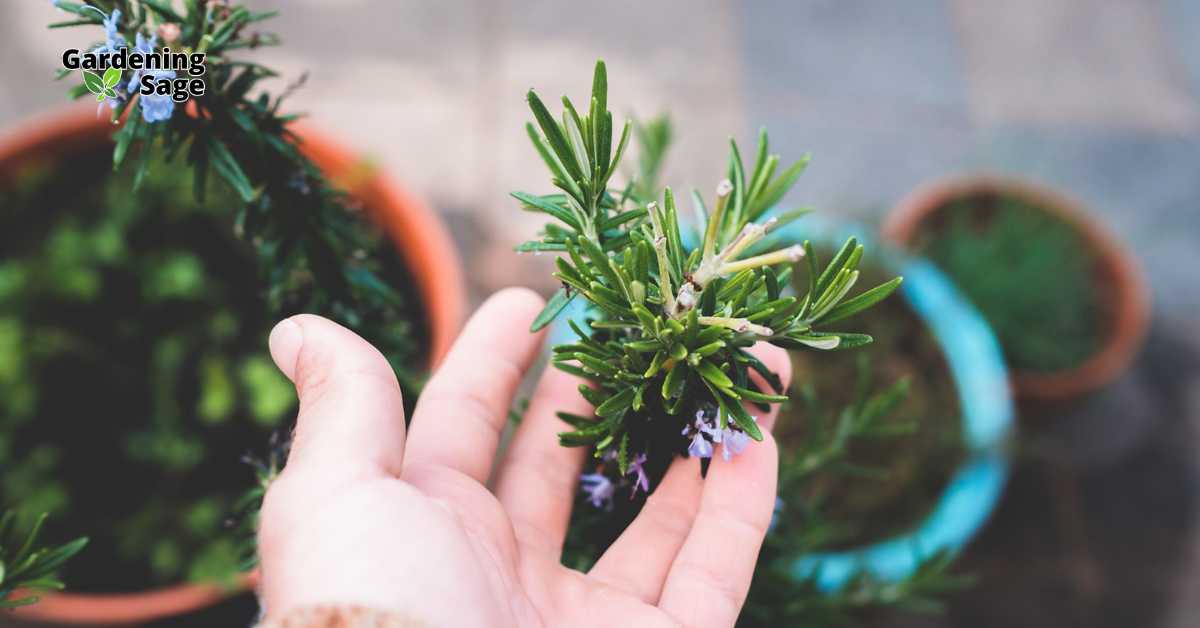Discover the wonders of growing Rosemary, a versatile and aromatic herb that’s a star in any garden. Known for its fragrant leaves and resilience, Rosemary is a favorite among gardeners and cooks alike.
In this comprehensive guide, we’ll explore the secrets to cultivating Rosemary with ease, making it a standout addition to your garden.
The Charm of Rosemary in Home Gardening
Rosemary is not just an herb; it’s a multi-functional plant that enhances both your garden and your kitchen. Its needle-like leaves and delicate blue flowers add beauty to any space, while its aromatic fragrance can transform culinary dishes.
Rosemary is also known for its health benefits, making it a valuable herb to grow at home.
Planting Rosemary: A Step-by-Step Guide
Planting Rosemary is straightforward. This herb thrives in well-draining soil and loves sunlight.
Start with either seeds or cuttings in early spring. If you’re starting from seeds, sow them indoors first and transplant them outside when they’re strong enough.
For cuttings, plant them directly in the soil or a pot with good drainage.
Rosemary prefers a sunny spot, receiving at least six to eight hours of direct sunlight daily. The right location is crucial for its growth and flavor development.
Caring for Your Rosemary Plant
Rosemary is a hardy herb that requires minimal care, making it perfect for beginners. Water your Rosemary plants deeply but infrequently, allowing the soil to dry out between watering.
Overwatering can lead to root rot, so ensure good drainage. Fertilization isn’t usually necessary, but a light application of a balanced fertilizer in the spring can promote growth.
Pruning is important for maintaining the shape and health of the plant. Regularly trim the tips to encourage bushy growth and prevent legginess.
Propagating Rosemary for an Everlasting Supply
Propagating Rosemary is easy and ensures a continuous supply. You can propagate Rosemary through stem cuttings. Simply cut a 2-3 inch stem from a healthy Rosemary plant, remove the lower leaves, and plant it in well-draining soil.
Keep the soil moist until the cutting establishes roots. This method is an excellent way to expand your Rosemary garden or share it with friends and family.
Rosemary in Garden Design

Incorporate Rosemary into your garden design for both aesthetic and functional purposes. Its upright growth habit and evergreen appearance make it ideal for borders, hedging, or as a focal point in herb gardens.
Rosemary’s aromatic nature also makes it a natural pest repellent, protecting nearby plants.
Grow Your Garden’s Star Herb with Ease
Growing Rosemary is a rewarding experience that brings fragrance, beauty, and flavor to your garden. With its ease of care and versatility, Rosemary is an ideal herb for both novice and experienced gardeners.
Follow these tips to cultivate a thriving Rosemary plant and enjoy the fresh, aromatic leaves in your cooking, herbal remedies, and garden landscape.














